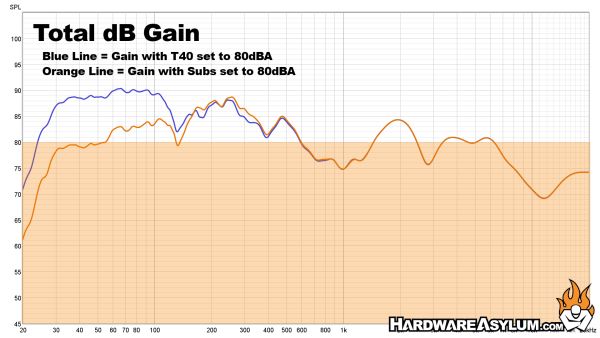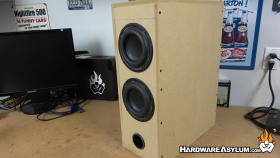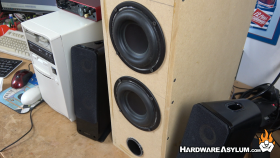How to Double your Bass with a Second Subwoofer
Author: Dennis GarciaIntroduction
There are a variety of different ways to improve a sound system and much like on a PC it comes down to how well the components work together. For instance, you can upgrade to the latest Core i9 Processor but, If you fail to increase your cooling performance there is a strong chance that the CPU will start throttling under load. When dealing with a sound system you can spend the money upgrading your sound card or use an external DAC however, if our speakers are small or have limited power handling there is a strong chance you will never notice the difference in your upgrade.
I have been working on a rather involved project to add a custom subwoofer to a Retro PC sound system. Most sound systems of the era lacked a dedicated subwoofer which limited the quality and accuracy of music and gaming audio and I wanted to change that.
My first project was a simple Isobaric enclosure where I placed two 5.25” Tang Band subwoofers in a clamshell configuration in an attempt to make them “hit low” or reproduce lower frequencies without needing a super large enclosure. The results of that experiment were mixed. On one hand the system was a total success however, adding a second subwoofer in this configuration offered no real benefit.
Be sure to check out that article and video for more information.
For my next project I wanted to take a different approach that would effectively allow my subwoofers to sound the same and become more efficient in the process. To do this you simply double the number of speakers in your enclosure. This will increase the overall SPL while reducing the load on your amplifier.
In this video I discuss the process involved to double your base and some of the reasons behind why this actually works.
A miniDSP UMIK-2 measurement microphone is used to take frequency response measurements and the Room Equalization Wizard software is used to record and compare the various tests. GL Quake on my Retro Pentium PC is used as a sound quality demo and with quality speakers or headphones you can easily tell the difference a subwoofer can make in overall sound reproduction.
The UMIK-2 is also an excellent microphone for capturing music and bass tracks so if you cannot hear the intro and outro music you'll need better bass in your life.

In the above chart the blue line is the subwoofer enclosure featured in this article and the difference between the two lines is the relevant gain in SPL (Sound Pressure Level, aka volume) between the two ways you can configure these independent sound systems.
The first is when you set the total system to a measurement level of 80dB (at the UMIK-2 microphone). By doing this we can record the amplitude and frequency response of the subwoofer along with the Creative T40 desktop speakers and the relationship between the two will expose how efficient the subwoofer is.
For the orange line we re-adjust the gain levels on the subwoofer such that the subs are reporting 80db and then re-run the frequency sweep. Overall, there is a natural 8dB gain in SPL between them two configurations while the volume of the Creative T40 remains the same.



